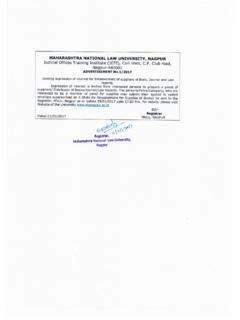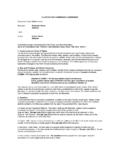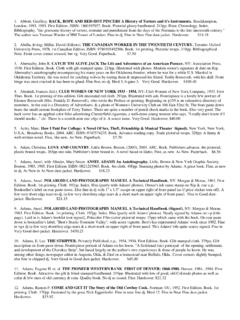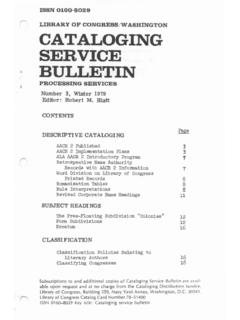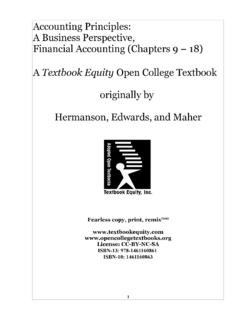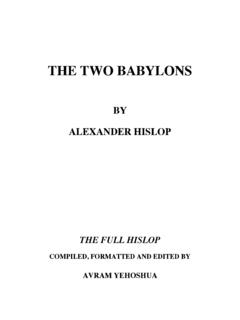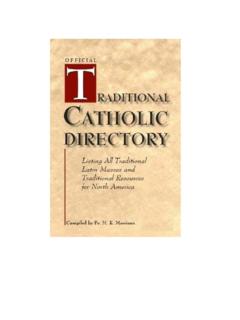Transcription of Tosefta Berachot - Tosefta Online - English …
1 Tosefta Berachot Translated into English with a commentary by Eliyahu Gurevich Vowelization of the Hebrew Text by Rabbi Levi Sudri Published by: Eliyahu Gurevich 848 N Rainbow Blvd. #1744 Las Vegas, NV 89107 USA Website: Email: Copyright 2010 by Eliyahu Gurevich 1st Edition All rights reserved. This book, or parts thereof, may not be reproduced in any form without written permission from the publisher. Printed in the United States of America Paperback ISBN: 978-0-557-38968-1 Hardcover ISBN: 978-0-557-38985-8 Dedicated to my grandfather, Peter Tsypkin, who taught me how to build a bridge across the river and not along it. Посвящено моему деду, Петру Цыпкину, кто научил меня как строить мост поперёк реки, а не вдоль.
2 Table of Contents Introduction to the Tosefta .. 6 Who wrote the Tosefta ? .. 8 The order of the tractates of the Tosefta .. 9 Printed editions of the Tosefta .. 22 Commentaries on the Tosefta .. 24 Translations of the Tosefta .. 29 Books about the Tosefta .. 29 Introduction to this edition of the Tosefta .. 31 Introduction to Masechta Berachot .. 35 Berachot , Chapter 1 .. 37 Berachot , Chapter 2 .. 67 Berachot , Chapter 3 .. 107 Berachot , Chapter 4 .. 159 Berachot , Chapter 5 .. 215 Berachot , Chapter 6 .. 312 Greek Words Index .. 433 General Index .. 434 Introduction to the Tosefta The Tosefta is a book of Jewish oral law, most probably written in the 3rd century CE. It is a compilation of short passages, called Beraitot (singular: Beraita), each of which states a particular law or point.
3 There is a debate between modern scholars whether the Tosefta was written before or after the Mishna, as there is literary evidence pointing both ways. It is my opinion that the Tosefta was written after the Mishna as its name, Tosefta , implies. Tosefta is an Aramaic term, meaning the same as the Hebrew word, Tosefet, which simply means addition . As the name suggests it was compiled as an addition to the Mishna. The Tosefta serves its purpose as an addition to the Mishna in a number of ways: 1. It adds laws that are not mentioned in the Mishna at all. 2. It clarifies some of the laws that are mentioned in the Mishna in a very concise manner by adding additional words to them. 3. It quotes additional or different Tannaim as the sources of the exact laws mentioned in the Mishna.
4 4. It quotes dissenting opinions from those listed in the Mishna. 5. It interprets obscure passages in the Mishna. Throughout my commentary I have pointed out different passages in the Tosefta which imply it being written after the Mishna. Of course, this does not mean that all of the Tosefta has been written after the Mishna. There are individual Toseftot that have been formulated long before the 3rd century CE, just like there are individual Mishnayot that have been formulated way before the Mishna as a whole was written down. These passages were passed orally from generation to generation until they were written down into the book of the Tosefta . As I came across such passages I have pointed out their most probable date of compilation.
5 The Tosefta follows the same order of tractates (Masechtot) as the Mishna, although the number of chapters, as well as the location of individual Toseftot 6within a chapter, differs from the Mishna. It should be noted that four Masechtot of the Mishna are omitted from the Tosefta : Avot, Kinnim, Middot and Tamid. It is not known why particular laws have not been included in the Mishna and have only been included in the Tosefta . It is a common belief that the author of the Mishna, Rebbi Yehudah Hanassi (135 220 CE), felt that these laws were not as important as others and therefore did not include them into the Mishna. However there are multiple examples throughout the Tosefta that show that this belief is simply not true.
6 The Tosefta often quotes such important laws that are not mentioned anywhere else that without them the Torah simply would not be able to be kept. I would like to point out one such example. There is a law in the Torah of a ritual impurity (Tumah) called a Zav, for a man, and a Zavah, for a woman. See Vayikra 15:2-15. The impurity is associated with some kind of a flow of a liquid out of the human body which renders the person impure (Tameh). However the Torah itself does not explain what kind of flow this is. The Mishna dedicates a whole Masechta to the laws of a Zav and a Zavah, called Zavim. However, it also does not explain when this flow occurs. It assumes that this as a known fact.
7 The only source which explains what kind of flow the Torah is talking about is the Tosefta . The Tosefta (Zavim Tosefta 2:2) states as follows: And what is the difference between the flow [of a Zav] and a [regular] seminal emission? The flow [of a Zav] comes from dead flesh ( non-erect penis), [where as] a [regular] seminal emission comes from live flesh ( erect penis).The flow [of a Zav] is watery, like the white of a fertile egg [of a chicken] and a [regular] seminal emission is cohesive, like the white of a non-fertile egg [of a chicken]. A [regular] seminal emission is reddish and the woman may assign [the red stain on her garment, not upon her own menstruation, but rather upon] it ( her husband s semen that leaked out of her vagina after sex, which would not make her impure (Tmeah) as a Niddah).
8 Most importantly this Tosefta describes the cause of the flow of a Zav, which is a discharge from a non-erect penis, most probably due to a sexually 7transmitted disease, gonorrhea. Since the discharge from the penis during gonorrhea is essentially pus, or a discharge the looks like pus, it is a lot less sticky than semen, and therefore the Tosefta accurately describes it being watery, as opposed to being cohesive like semen. The Tosefta s last statement is referring to a common condition known as hematospermia, which is the presence of blood in the semen, which gives it a reddish color. Often this condition is benign although sometimes it is indicative of some kind of a problem.
9 During gonorrhea there is generally no blood emitted from the penis together with the pus and therefore it can serve as another distinction between the two emissions. It should be clear by now that without this Tosefta the laws of a Zav would remain completely obscure as there would be no clear definition of what kind of a flow causes the Tumah of a Zav. This proves that in no way Rebbi Yehudah Hanassi could have thought that this law is somehow not important enough to be included in the Mishna. Therefore the reason behind the exclusion of various critical laws (Halachot) from the Mishna remains a mystery. Who wrote the Tosefta ? The author of the Tosefta is not clearly known. Rav Sherira Gaon writes in his famous letter (Iggeret Rav Sherira Gaon 34), around 976 CE, that he is sure that Rebbi Chiya (circa 180 230 CE), the student of Rebbi Yehudah Hanassi, wrote it.
10 The only thing he is not sure about is whether he wrote it during the lifetime of Rebbi Yehudah Hanassi or after his death (in 220 CE), because the year of Rebbi Chiya s death is not clear. This has been the traditional opinion ever since. However, modern scholarship has shown that it is also possible that Rebbi Oshiya (also known as Rebbi Hoshiya) may have written it, either by himself or together with Rebbi Chiya. See Michael Higger, A Yerushalmi View of the Authorship of the Tosefta , Proceedings of the American Academy for Jewish Research, Vol. 11 (1941), pp. 43-46. It should be noted that Rebbi Chiya himself is mentioned in the Tosefta (Beitza 1:4 and Negaim 8:7) implying that another person did the final editing.
